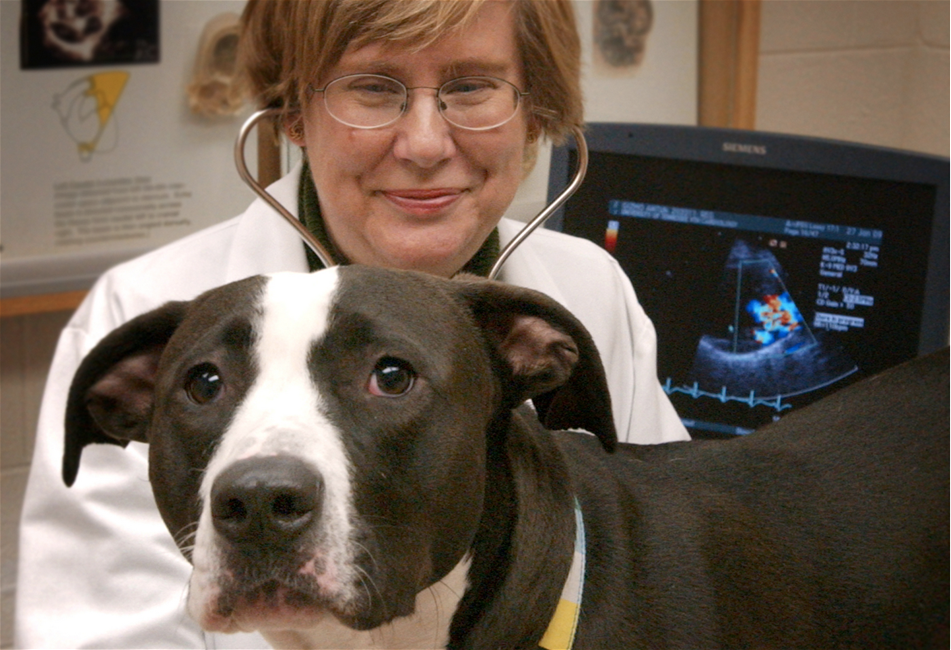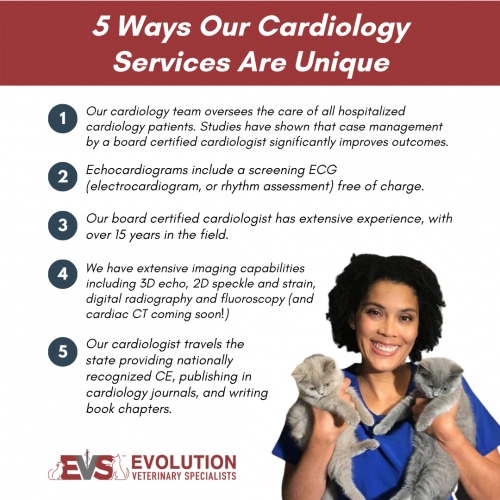The Duty of Ultrasound and CT Scan in Modern Vet Practices: Insights From Experienced Professionals
In contemporary veterinary practices, ultrasound and CT scans significantly improve analysis abilities. These imaging strategies offer essential understandings right into animal health and wellness, leading treatment choices. Experienced experts acknowledge the special advantages of each modality. Ultrasound supplies real-time analyses, while CT scans supply elaborate anatomical details. Recognizing their applications and roles raises vital concerns about their influence on individual end results and the future of vet diagnostics. What insights can be gained from their integrated use?
Comprehending Ultrasound in Veterinary Medication
Ultrasound is a necessary analysis device in veterinary medication, using a non-invasive approach to picture interior frameworks. This imaging strategy utilizes high-frequency sound waves to produce real-time pictures of cells and body organs, permitting veterinarians to evaluate conditions without surgical intervention. Usual applications include examining the heart, liver, kidneys, and reproductive organs, as well as checking pregnancies.The procedure is relatively quick and can be executed in different settings, making it an obtainable alternative for veterinarians. Unlike radiography, ultrasound supplies in-depth info concerning soft cells and blood flow, which is important for exact diagnoses.Veterinary professionals depend on ultrasound to detect irregularities such as tumors, cysts, and fluid build-up. Its capability to guide biopsies and various other treatments even more improves its utility in professional practice. By supplying a effective and risk-free way to take a look at interior makeup, ultrasound has actually ended up being a foundation of modern vet diagnostics.
The Advantages of CT Checks for Animal Diagnostics
CT checks offer significant advantages in vet diagnostics by giving boosted accuracy in recognizing interior conditions (CT Scans For Animals). As a non-invasive imaging technique, they guarantee the security and convenience of animals throughout assessments. Furthermore, CT scans assist in an extensive analysis of internal structures, enabling a lot more reliable treatment planning
Improved Diagnostic Precision
Innovations in imaging modern technology have considerably boosted analysis precision in vet medicine, particularly through making use of CT scans. These scans offer thorough cross-sectional photos of an animal's interior structures, enabling veterinarians to determine irregularities with precision. The high resolution and three-dimensional capabilities of CT imaging assist in the discovery of problems such as growths, cracks, and internal bleeding that might be missed with standard imaging techniques. In addition, CT scans can assist in pre-surgical planning by providing a thorough sight of physiological connections. This level of detail not just enhances the accuracy of diagnoses but likewise aids in tailoring effective treatment plans. The integration of CT modern technology right into veterinary practices is transforming the landscape of pet health care, boosting end results for individuals.
Non-Invasive Imaging Method
The introduction of non-invasive imaging techniques has revolutionized animal diagnostics, with CT checks becoming a popular tool in vet methods. These scans offer high-resolution, cross-sectional photos of a pet's inner frameworks, allowing vets to evaluate complex problems without the need for intrusive procedures. The advantages of CT scans include their capability to spot lumps, cracks, and interior blood loss with impressive accuracy. Furthermore, they promote the assessment of soft tissues and body organs, enhancing diagnostic abilities. The rate of CT scanning enables quick decision-making, which is vital in emergency situation situations. By reducing tension and pain for the animal, CT scans add to a much more humane strategy to diagnostics, ultimately enhancing therapy outcomes and advancing vet treatment.
Comprehensive Internal Analysis
A thorough interior assessment is essential for exact diagnosis and reliable therapy in veterinary medication. CT scans offer substantial benefits hereof, providing thorough cross-sectional pictures of an animal's inner frameworks. This sophisticated imaging technique boosts visualization of complicated anatomical areas, enabling veterinarians to identify irregularities such as lumps, cracks, and interior blood loss with better precision. Furthermore, CT checks promote the analysis of conditions that may be testing to detect through conventional methods. The speed and accuracy of CT imaging also contribute to timely interventions, boosting client results. As vet practices progressively integrate CT modern technology, the advantages of comprehensive interior assessments end up being noticeable, enhancing the significance of this device in contemporary veterinary diagnostics.
Comparing Ultrasound and CT Imaging Techniques
While both ultrasound and CT imaging serve important functions in veterinary diagnostics, each technique provides distinctive benefits and limitations that can affect professional decision-making. Ultrasound is specifically valued for its real-time imaging capacities, permitting vets to observe dynamic physiological processes. This technique is non-invasive, portable, and does not entail ionizing radiation, making it a more secure option for both medical professionals and pets. Ultrasound may have restrictions in imagining certain physiological frameworks or deep tissues.Conversely, CT imaging offers detailed cross-sectional sights of the body, allowing for precise localization of problems. It masters evaluating facility body organs and structures, especially in the thorax and abdomen. However, CT scans need sedation or anesthetic in lots of cases and involve exposure to ionizing radiation. Ultimately, the selection between ultrasound and CT relies on the particular scientific circumstance, the area of passion, and the seriousness of the analysis demands.
Instance Studies: Successful Diagnoses Via Imaging
Study show the significant enhancements in analysis accuracy accomplished via sophisticated imaging innovations like ultrasound and CT scans in vet techniques. These improvements not only improve the discovery of numerous conditions yet also help with prompt and reliable therapy plans. Assessing specific cases can highlight the transformative effect of these imaging techniques on veterinary medicine.
Diagnostic Accuracy Improvements

Imaging Modern Technology Advancements
As veterinary imaging technology remains to advance, its effect on diagnostic capabilities becomes increasingly apparent. Recent instance researches highlight the effective application of innovative ultrasound and CT check methods in recognizing complicated problems. For example, a vet facility utilized high-resolution CT scans to detect an unusual form of lung cancer cells in a pet dog, which standard imaging had missed. In a similar way, an ultrasound assessment revealed a stomach mass in a cat, triggering prompt medical treatment and a favorable end result. These advancements not just enhance diagnostic precision yet additionally enable veterinarians to devise targeted therapy plans. By leveraging sophisticated imaging innovations, veterinary experts are substantially enhancing client care, bring about much more effective administration of numerous health problems in pets.
The Duty of Imaging in Emergency Situation Vet Treatment
Imaging plays an important function in emergency vet care, supplying vets with important information needed to make rapid, informed decisions. In immediate scenarios, techniques like ultrasound and CT scans enable experts to quickly examine a pet dog's inner frameworks, determining vital conditions such as internal blood loss, cracks, or organ irregularities. These imaging techniques enable for real-time analyses, helping with prompt treatments that can be life-saving. Ultrasound is invaluable for examining soft tissue injuries and problems like fluid build-up, while CT scans offer thorough pictures of intricate anatomical frameworks, important for identifying trauma cases. The rate and accuracy of these imaging methods boost the vet's capacity to devise effective treatment strategies, making sure the most effective feasible end results for their company website people. As a result, the assimilation of advanced imaging innovations into emergency situation veterinary methods is not just helpful but significantly required, as it enhances diagnostic abilities and improves total animal care throughout defining moments.
Training and Proficiency in Vet Imaging
Although sophisticated imaging strategies such as ultrasound and CT scans are vital for reliable veterinary treatment, the successful application of these modern technologies greatly depends upon the training and knowledge of veterinary specialists. Competent use imaging tools needs thorough knowledge of anatomy, pathology, and the principles underlying each technique. Vet experts need to undertake customized training to accurately interpret imaging outcomes, which is important for identifying conditions and preparing treatment.Certifications and proceeding education in veterinary imaging enhance the skills of professionals, allowing them to remain upgraded with technical innovations. Collaboration between radiologists and veterinarians usually results in improved diagnostic precision, as professionals can provide insights right into complicated situations. Furthermore, useful experience in taking care of imaging tools cultivates confidence in its application. Ultimately, the high quality of veterinary imaging services is straight correlated to the level of training and knowledge possessed by the specialists using these essential analysis devices.
Future Patterns in Diagnostic Imaging for Animals
With the quick innovations in modern technology, vet diagnostic imaging is poised for significant development in the coming years. Emerging fads suggest a shift towards even more obtainable and portable imaging modalities, such as portable ultrasound tools, which could boost field diagnostics. In addition, the assimilation of man-made intelligence is anticipated to change picture analysis, enabling quicker and much more exact analyses of results.Moreover, developments in 3D imaging strategies and computed tomography will certainly offer vets with more thorough sights of pet anatomy, leading to enhanced treatment strategies. Virtual truth technology might likewise contribute in surgical preparation and education, providing vets a special perspective on intricate cases.As telemedicine remains to expand, remote consultations assisted in by analysis imaging will certainly become a lot more typical, allowing experts to aid family doctors in real-time. In general, these patterns are readied to enhance the effectiveness and performance of veterinary care, eventually improving animal end results.
Regularly Asked Questions
Exactly How Much Do Ultrasound and CT Checks Cost in Veterinary Centers?
The expenses of ultrasound and CT scans in vet facilities usually vary from $300 to $1,500, depending upon variables such as location, clinic type, and specific procedures required for the animal's diagnosis and treatment.

Are There Any Kind Of Risks Related To Ultrasound and CT Scans for Family Pets?
Ultrasound and CT scans typically pose minimal risks to family pets. Prospective concerns consist of sedation reactions and exposure to anesthetics. Veterinarians meticulously examine each case to alleviate any threats associated with these analysis treatments
The Length Of Time Do Ultrasound and CT Treatments Usually Take?
Ultrasound treatments typically take around thirty minutes to an hour, relying on the complexity. CT scans, being more in-depth, usually need half an hour to 90 minutes, consisting of prep work and recovery time for the animal.
Can All Veterinarians Perform Ultrasounds and CT Scans?
Not all vets can execute ultrasounds and CT scans. Specialized training and accreditation are often needed to ensure proficiency in these innovative imaging techniques, which may limit their accessibility to vets with additional qualifications and resources.
What Types of Pets Benefit Most From These Imaging Techniques?
Certain animal types, specifically pets and cats, advantage greatly from ultrasound and CT scans. These imaging methods boost analysis precision for conditions like lumps, internal injuries, and organ abnormalities, leading to improved treatment outcomes and person care. The high resolution and three-dimensional capabilities of CT imaging facilitate the detection of problems such as tumors, fractures, and internal blood loss that could be missed out on with traditional imaging methods. Instance researches show the substantial renovations in analysis accuracy achieved through advanced imaging modern technologies like ultrasound and CT scans in vet techniques. Improving analysis accuracy in veterinary methods has been considerably aided by developments in imaging innovations such as ultrasound and CT scans. Sophisticated imaging methods such as ultrasound and CT scans are crucial for reliable veterinary treatment, the effective implementation of these modern technologies greatly depends on the training and proficiency of veterinary professionals. Vet professionals must go through specialized training to precisely analyze imaging outcomes, which is crucial for diagnosing conditions and intending treatment.Certifications and proceeding education in veterinary imaging boost the abilities of practitioners, allowing them to stay upgraded with technical innovations.